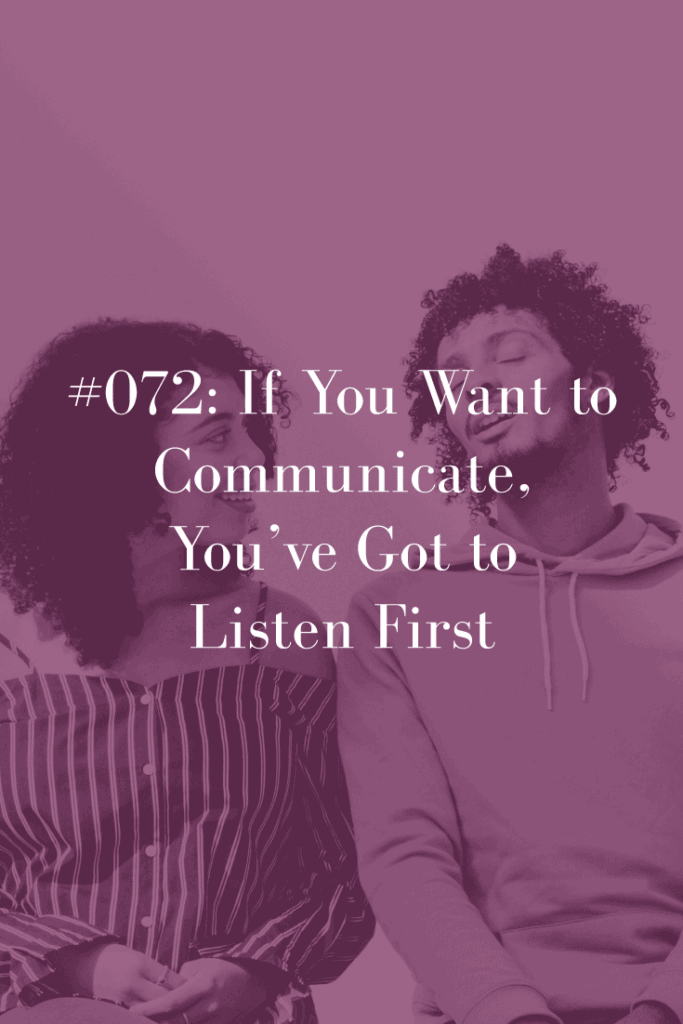
Today I’m going to teach you:
- The Five Steps to Great Listening
- General Rules for Being a Great Listener
- What to Pay Attention to When You Do Speak
Have you ever been chatting with someone and kind of “woke up” in the middle of the conversation? Or maybe you had a dialogue at work and then couldn’t remember anything about it just a half hour later?
You might be thinking: “Listening is automatic, right?” Nope. Hearing is automatic; listening is a learned skill. Those who are best at it, do best in all their relationships – from work to romance to parenting.
The Five Steps to Great Listening
- Set the Scene: think about timing and diminish distractions
- Check Yourself Before You Wreck Yourself: Check in with yourself before you start the conversation. This means being fully present in your own mind and body. How are you feeling emotionally? Are you noticing any tightness or changes in your body?
- Set Intention: It just takes a few moments to set your intention for how you want the conversation to go. You can do this easily by asking, “What’s my end game?” How do you want to feel at the end of this talk?
- Focus!: Now it’s about focusing on what the other person is actually saying. The other person has 100 percent of your attention and you’re actively thinking about what the other person is saying.
- Evaluate Before Responding: In this final step, you’re evaluating how you’re feeling before responding to what’s being said.
Three General Rules for Being a Great Listener:
- Listen like you’re wrong. Be curious.
- Listen without judgment.
- Be aware of your body language – face the other person and hold eye contact – be aware of crossing your arms, etc.
When you truly listen, by following these steps – your fear response will diminish so you’ll be able to retain information and remember what was said MUCH better!
Resources and Links:
Abby Medcalf, PhD YouTube Channel
Rebecca Z. Shafir, The Zen of Listening: Mindful Communication in the Age of Distraction












